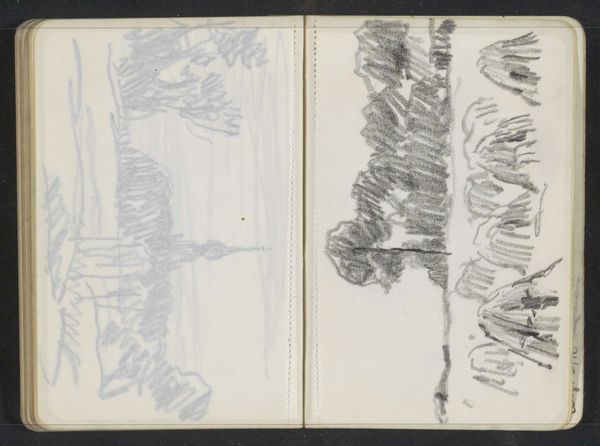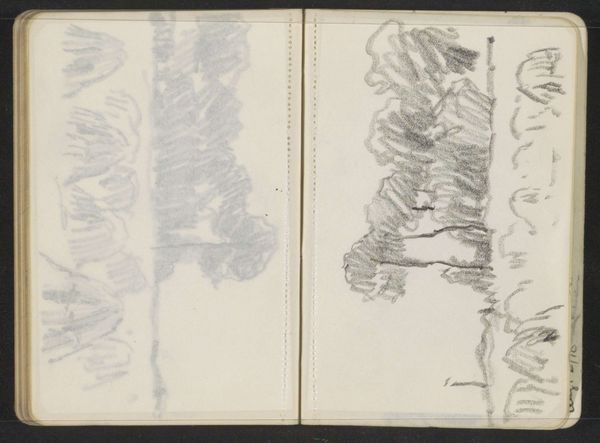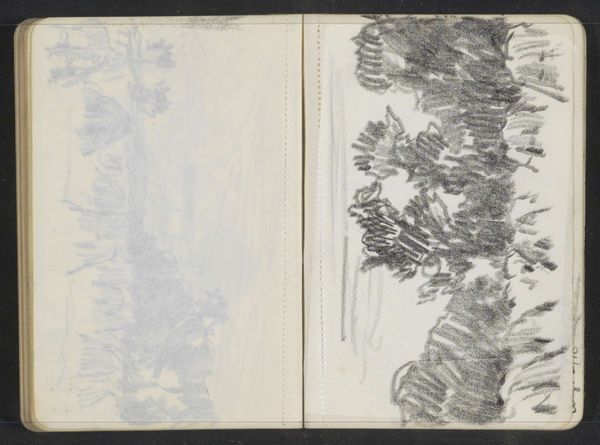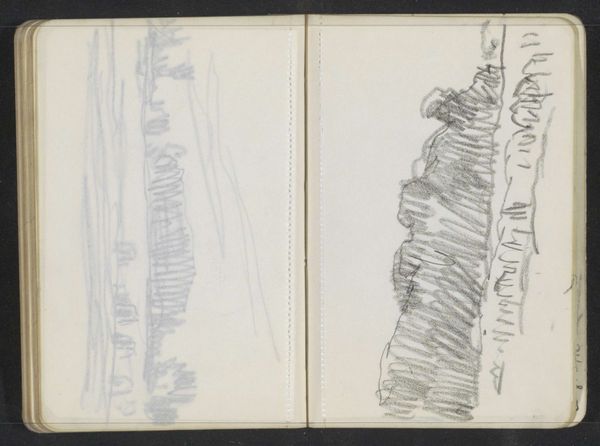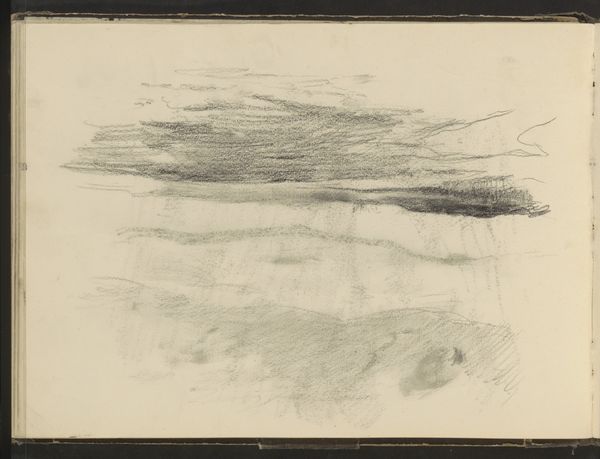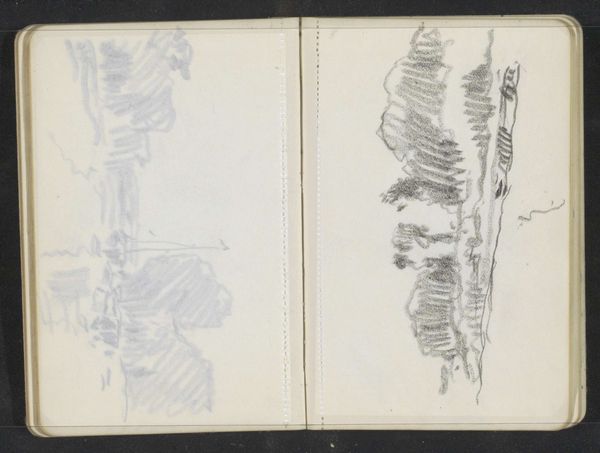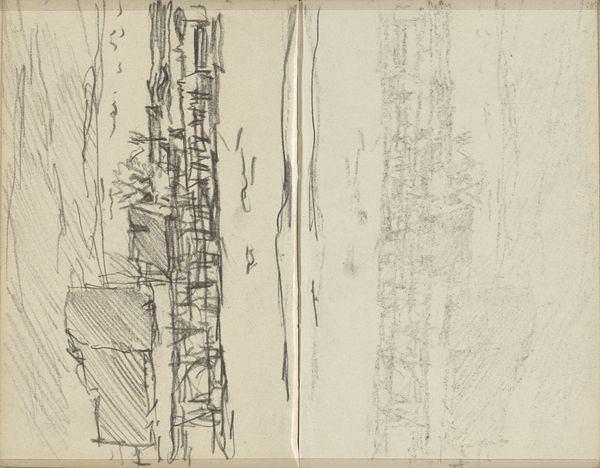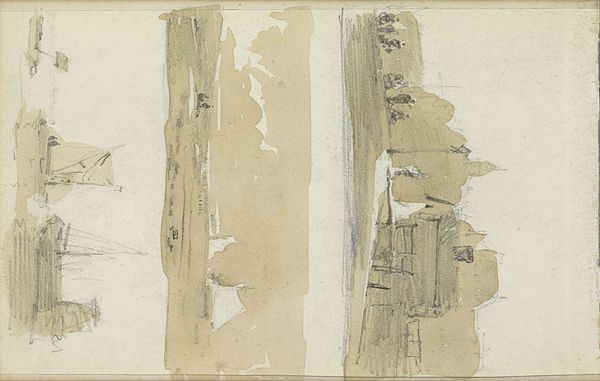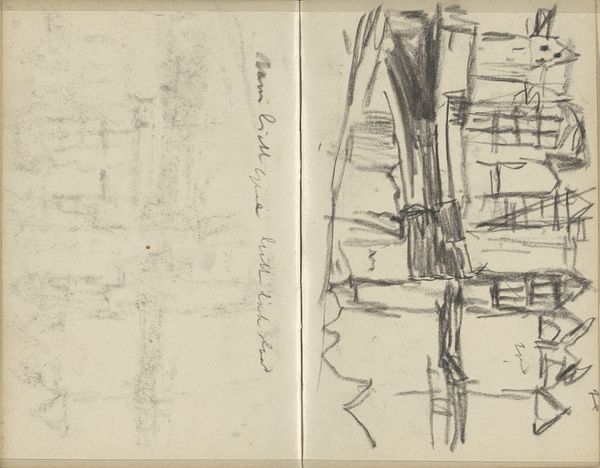
Dimensions: 152 mm (height) x 254 mm (width) (bladmaal)
Curator: Agnes Slott-Møller's "To studier af en pynt ved aftenstide", created around 1896-1897, is a captivating watercolor drawing currently housed in the SMK, Statens Museum for Kunst. Editor: My first impression is that there’s a delicate, almost melancholic, mood evoked by the use of such ethereal watercolors. The composition, split into two distinct studies, creates a striking duality. Curator: Indeed, the choice of watercolor lends itself to the depiction of twilight. Slott-Møller's subtle handling of the medium—thin washes creating atmospheric depth—is critical to understanding the drawing's symbolism, evoking a sense of fleeting beauty. Notice how the form is loosely constructed out of tone. Editor: But the materiality is crucial too. The quickness of watercolor suggests a rapid capturing of a transient moment, reflecting a sensitivity to naturalistic change, not merely its superficial likeness. What sort of pigment manipulation allows the trees to simultaneously ground the picture plane and drip away as liquid colour? Curator: Certainly. Moreover, Slott-Møller engages with the symbolic language of landscape, typical of the period. Consider the composition: two studies displayed in the frame create contrast and comparison; a meditation on time’s relentless forward march? Editor: And it appears quickly and easily done. I wonder about the cultural associations within 19th-century Denmark around sketch work? Was this for Slott-Møller something she was doing for pleasure versus preparing herself for ‘real’ artwork on commission? The ease, though, feels slightly deceptive: the material looks ‘light’, but actually feels dense in the first image. Curator: An interesting point. This speaks to a broader theme in Symbolist art of the late 19th century: the exploration of interior emotional landscapes through exterior natural forms. Here we might consider this piece's visual relationship with broader trends in literature and music of the same period. Editor: Considering it more, the artwork presents a dialogue between observation and representation. What do you do as a working painter during evening? You capture light through layers, trying not to manipulate it too heavily and allow your viewer into that evening moment with you. That requires mastery. Curator: Absolutely. Slott-Møller's drawing offers a poignant exploration of transience and feeling within landscape. The interplay between light, form, and symbolism is quite profound. Editor: It’s rewarding to see the processes visible. For all the emotional and aesthetic refinement on display, we are not separate from production: you need hand, eye and surface all to pull these moments from dusk!
Comments
No comments
Be the first to comment and join the conversation on the ultimate creative platform.
